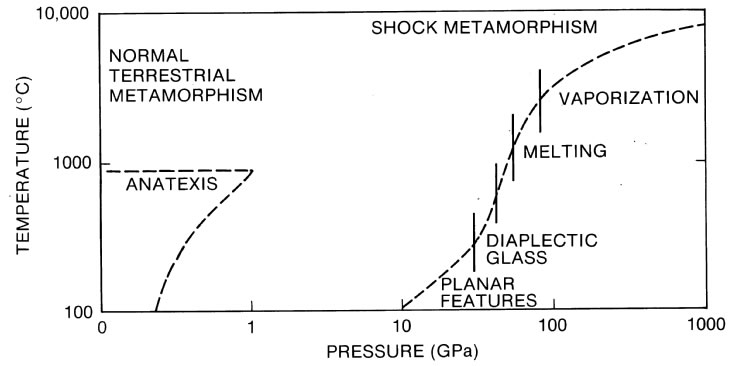Shock Metamorphism
Transient, high-pressure shock waves have passed through lunar samples repeatedly, altering the nature of minerals (Roddy et al. 1976). Mosaicism is characteristic of shock damage to silicate minerals and is evidenced by unusually strong, irregular undulatory optical extinction. Deformation bands are lamellar- shaped regions in crystals whose orientation differs from the host crystal‘s. The bands‘ orientational differences include “kink bands” and “mechanical twins.” At higher shock pressures, planer elements occur in multiple sets of planer or slightly bent optical discontinuities. Minerals shocked to this degree have bulk density and refractive indices that are lower than normal. At extreme pressures, the mineral becomes optically isotropic and is known as a diaplectic glass. Diaplectic glass frequently becomes partly crystalline again. Different minerals are affected to different degrees with advancing shock pressures. Generally, plagioclase is the first lunar mineral to be affected by shock. Eventually, high shock pressure is associated with heating and the rock melts or is vaporized (fig. 3).
Figure 3. - Comparison of shock metamorphism with normal terrestrial metamorphism. The transient high pressure shock wave causes heating leading to melting and vaporization of some material. At intermediate shock pressure, some minerals lose their crystallinity and form diaplectic glass while maintaining their chemical composition. Minerals subjected to low shock pressure exhibit mosaicism and planar feature.


